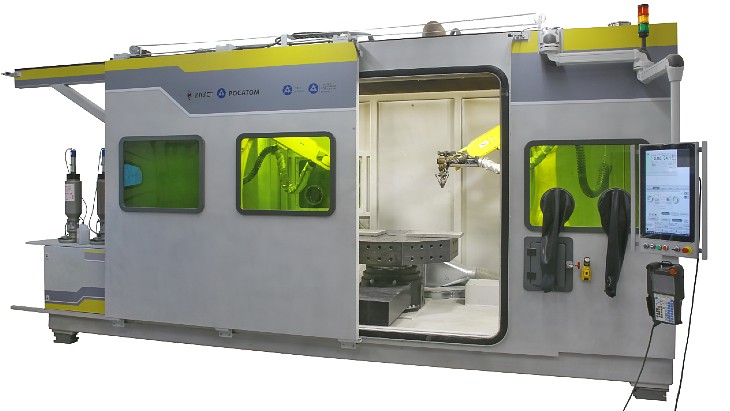The machine, created by RusAT (a subsidiary of Russian nuclear fuel manufacturer TVEL, which is itself a subsidiary of Russian state nuclear corporation Rosatom) and the St Petersburg Marine Technical University's Institute of Laser and Welding, has a load capacity of eight tonnes, features two industrial six-axis robots and can manufacture products with a diameter up to 2.2 metres and a height of 1 metre. It works by the layer-by-layer formation of products using lasers and powder in the direct metal deposition (DMD) system - it has the flexibility to manufacture composite products from different metal powders with different properties.
It can be used in a variety of industries but has already been used to "manufacture a 1-metre-high fragment of the baffle of the internal device of a nuclear power reactor". Olga Ospennikova, director of the Association for the Development of Additive Technologies, said: "Additive technologies are one of the drivers that determine the shape of a new generation of production ... this is a breakthrough technology that opens up the possibility for a wide application of additive technologies in the nuclear industry, in particular, it will allow printing large-sized parts of nuclear reactors."
Ilya Kavelashvili, director general of RusAT, said: "The creation of new powerful installations makes it possible to fully introduce additive technologies in heavy engineering, to measure the weight of products printed on 3D printers not in kilograms, but in tonnes. This will save a large amount of materials, increase production productivity and product quality. Rosatom has a large-scale programme for the introduction of additive technologies, and ... is the starting point for the widespread use of 3D printing in Russian mechanical engineering."
Gleb Turichin, director and chief designer of the Institute of Laser and Welding Technologies, said: "Our joint development is the first such installation where several growing tools can work simultaneously without interfering with each other with their temperature fields. Our joint experience with Rosatom has proved that additive technologies can be successfully applied in heavy engineering."
Rosatom currently has three additive technology centres, in Moscow, Novouralsk and Nizhny Novgorod. The new 3D printer was presented at the Metalworking 2023 conference in Moscow.





_82983.jpg)
_34792.jpg)
_16403_79272.jpg)


_76087_55556.jpg)



